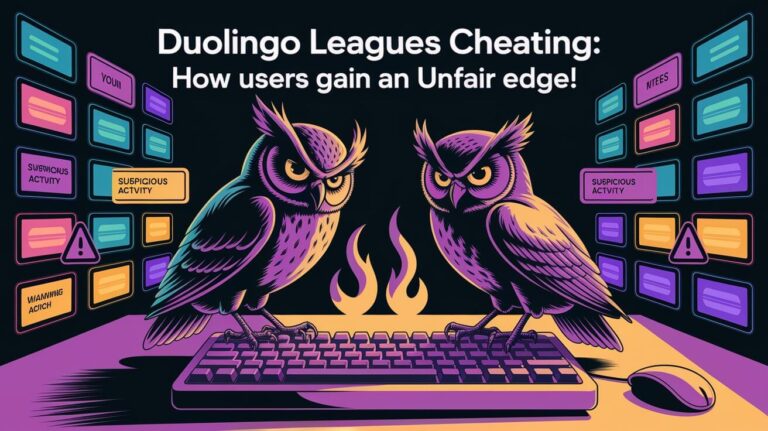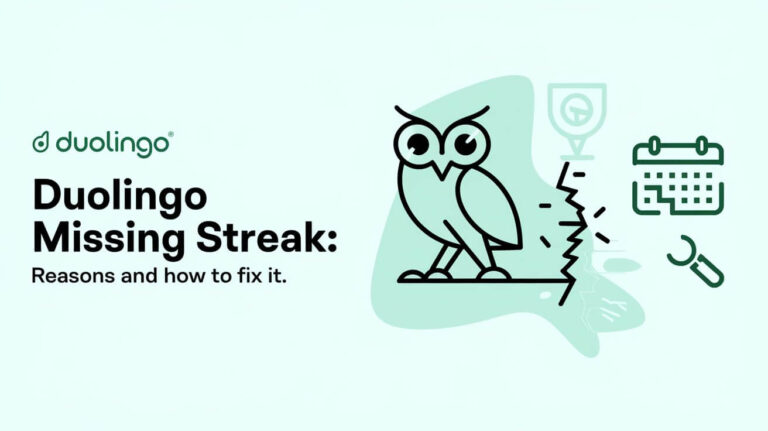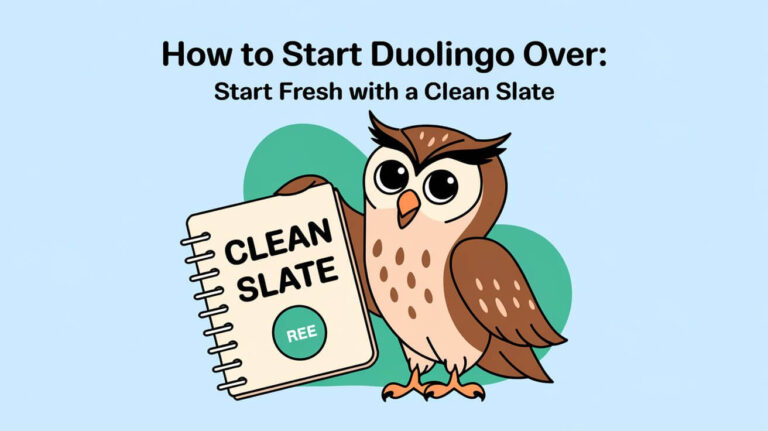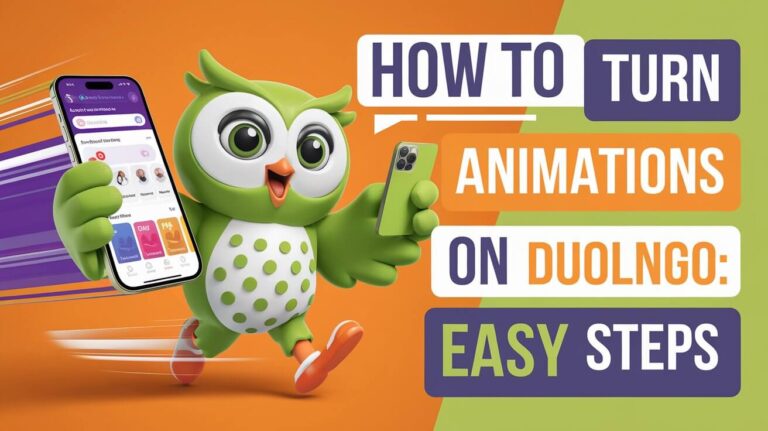Ever wondered how Duolingo makes its characters come alive? The app uses animations to bring Duo the Owl and Lily to life. These characters are your study buddies, cheering you on as you learn new languages.
But what magic happens behind the scenes? How do these characters seem so alive and interactive?
Key Takeaways
- Duolingo uses Rive animation platform for scalable and efficient character animations
- State machines and additive blend states in Rive make smooth transitions between mouth shapes and animation states
- In-house speech recognition and pronunciation models ensure precise timing for character animations
- Duolingo’s characters have 10+ mouth shapes and over 20 mouth movements for accurate lip-syncing
- Rive animations’ compact file sizes and integrated architecture make for a responsive and interactive experience in Duolingo’s app
Character Animation Tools and Software Setup
At Duolingo, we use a powerful set of tools and software for animation. The Rive animation platform is a key part of this. It’s a game-changer for making animated assets for our language learning app.
Rive Animation Platform Benefits
Duolingo supports over 40 languages, teaching thousands of sentences in each. It’s not possible to animate mouth shapes for all these languages by hand. Rive’s software lets us create endless animation combinations by mixing a few assets. This helps us build efficient lip-syncing systems for characters in many languages.
It also lets mouths move independently without messing up character animations.
State Machine Implementation
Rive’s State Machine is key to Duolingo’s animation process. It shows the logic behind animation states, controlling how they work together. This setup lets us make big animations.
It includes layers for character and talking animations, all running at the same time.
File Size Optimization Techniques
Duolingo checks its design and animation projects a lot to see how they do. They use Rive’s compact file format and smart animation techniques to keep things small. This makes the app fast and smooth for users, helping it succeed.
| Key Benefits of Rive Animation Platform | Duolingo’s Approach to Animation |
|---|---|
| Virtually unlimited animation asset combinations Efficient lip-syncing for characters in multiple languages Visual State Machine for programmatic animation control Compact file format and optimized animation techniques | Extensive measurement of design and animation projects Hiring creative technologists with diverse skills Training in Rive for animators, designers, and engineers Bridging the gap between different disciplines |
Speech Technology Integration for Movement
At Duolingo, advanced speech technology is key for their character animations. They start with speech, then analyze it using their own models. This analysis gives them the timing needed for each word and sound.
This timing lets them create mouth movements that match the speech. It’s a big step in making their animations look real.
Duolingo uses a special system to share this data with millions of users. This system makes sure the animations are accurate and consistent. It helps make learning a new language fun and engaging.
| Feature | Description |
|---|---|
| Speech Recognition | Duolingo’s speech recognition technology analyzes user speech characteristics, such as accents, intonations, and informal language, to accurately convert spoken words into text or execute commands. |
| Pronunciation Models | The company’s in-house pronunciation models provide detailed timing information for each word and phoneme, enabling the precise mapping of linguistic features to visual representations (visemes). |
| Viseme Generation | Duolingo’s factory system automatically generates viseme timings for all course content, ensuring accurate and consistent character animations for millions of users. |
Duolingo’s use of advanced speech technology makes learning a language more fun. It helps with duolingo character movement and duolingo character kinetics.
Character Viseme Design and Mouth Shapes
Making Duolingo characters is a detailed job. It involves designing special mouth shapes, called visemes, for each character. These shapes match their personality and the Duolingo look. The team works hard to create over 20 mouth shapes for each character. This makes their animations look real and fit the brand’s style.
Phoneme to Viseme Mapping
The animation starts with matching phonemes, the smallest speech units, to visemes. This careful task makes sure the characters’ mouth movements match the sound. It creates a natural and engaging learning experience for Duolingo users.
Custom Mouth Shape Libraries
The Duolingo team has built a big library of custom mouth shapes for each character. These libraries help create a variety of expressions. From small changes to big movements, they keep the Duolingo look unique.
Animation State Transitions
The last step is making smooth transitions between mouth shape states. Using Rive’s State Machine feature, the team makes sure the mouth movements are smooth. This improves the animation’s quality and realism.
Focusing on viseme design and mouth shape animation, Duolingo makes characters that grab users’ attention. They work well with the app’s speech technology. This makes learning a language fun and immersive.
Real-time Character Movement Controls
Duolingo’s animated characters move in real-time. When a learner faces a challenge, the app uses audio and timing to make the character move. This makes the animation match the audio perfectly.
This method cuts down on data transfer. It lets Duolingo characters react to what the user does. For example, if you click on a word, the character will say and show that word. They also do things like nod their head or blink, making learning fun.
Real-time controls make Duolingo’s duolingo animation tutorials and creating animated duolingo characters better. The characters’ actions and reactions blend well with the audio and user input. This makes learning a language more effective and enjoyable.
How To Make Duolingo Characters Move Using Bone Structure
Creating dynamic Duolingo characters is key to the app’s fun user experience. The Duolingo team uses a complex bone structure system in the Rive animation platform. They break down characters into nested artboards, then merge them into one “Character” artboard for smooth animation.
The bone structure is split into legs, hips, and other important areas. It helps link parts together, not just for movement. This lets the Duolingo team create many animations, from simple loops to fun celebrations. They also use constraints to make movements more realistic and detailed.
This duolingo character rigging method and the Rive platform bring characters to life. Users love their fluid and expressive movements. The team’s hard work in motion capture for duolingo has made the app very popular. It has also built a strong bond between users and their Duolingo friends.
Frequently Asked Questions
How are Duolingo characters brought to life using animation?
Duolingo uses different animation methods and tools to make its characters come alive. They use Rive, a web tool, for creating animations that move and change in real-time. This makes the characters more engaging and fun to watch.
What is the role of Rive’s State Machine in Duolingo’s character animation process?
Rive’s State Machine is key in Duolingo’s animation work. It shows the logic behind the animation, controlling how the characters move and change. This system helps Duolingo create big, detailed animations.
How does Duolingo optimize the file size of its character animations?
Duolingo keeps its animations small by using Rive’s special file format. They also use smart animation techniques. This includes layers for animation and talking, which helps keep the file size down.
How does Duolingo integrate speech technology to create accurate mouth movements for its characters?
Duolingo uses advanced speech tech to make its characters’ mouths move right. They start with speech, then use models to get the timing for each word. This timing is used to create mouth movements that match the sounds.
How are the unique mouth shapes (visemes) designed for each Duolingo character?
Each Duolingo character has special mouth shapes (visemes) that fit their personality. The design process makes sure these shapes look right and match the Duolingo style. Each character has over 20 different mouth shapes.
How are Duolingo character movements controlled in real-time during lessons?
Duolingo’s characters move in real-time during lessons. When a challenge comes up, the audio and timing are used to control the animation. This makes the characters react quickly to what the user does.
How are Duolingo characters rigged using a bone structure system?
Duolingo characters are set up with a bone structure system in Rive. They are divided into artboards, then combined into a main ‘Character’ artboard. The bones help with movement, and some parts are controlled by special rules for more complex actions.







